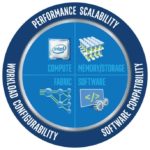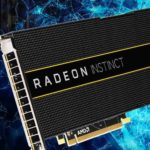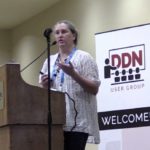“I think the most important thing I’d like people to know about SC16 is that it is a great venue for bringing the entire community together, having these conversations about what we’re doing now, what the environment looks like now and what it’ll look like in five, ten fifteen years. The fact that so many people come to this conference allows you to really see a lot of diversity in the technologies being pursued, in the kinds of applications that are being pursued – from both the U.S. environment and also the international environment. I think that’s the most exciting thing that I think about when I think about supercomputing.”
Parallware: LLVM-Based Tool for Guided Parallelization with OpenMP
Manuel Arenaz from Appentra presented this talk at the OpenMP booth at SC16. “Parallware is a new technology for static analysis of programs based on the production-grade LLVM compiler infrastructure. Using a fast, extensible hierarchical classification scheme to address dependence analysis, it discovers parallelism and annotates the source code with the most appropriate OpenMP & OpenACC directives.”
How Engility Delivers HPC
In this special feature, our own MichaelS reports on his SC16 meeting with Engility, a premier provider of integrated services for the U.S. government. “Complex High Performance Computing environments require careful planning, deep investigation into the technologies available and the ability to bring on-line a large system. Engility is uniquely positioned to work with demanding customers that require close collaboration in order to bring on-line state-of-the-art systems.”
Post SC16: Top 10 Things in Retrospect
In this special guest feature, Kim McMahon shares her perspectives on SC16. ““Faster” is the game in HPC. You can achieve speed with GPUs, FPGAs, or faster CPUs. GPUs have been around a while – you go to NVIDIA and that’s where your GPUs are. FPGAs have also been around a while, but recent market actions are now making them a more viable option: Intel’s acquisition of Altera, the maturation of the OpenCL toolchain, Microsoft’s adoption and use of Bing in their data center, AWS adding FPGAs to their cloud offerings.”
New Intel Technologies Highlighted in SC16 Announcements
Here’s a recap of SC16 announcements from Intel that are designed to provide even more powerful capabilities to address HPC challenges like energy efficiency, system complexity, and the ability for simplified workload customization. In supercomputing, one size certainly does not fit all. Intel’s new and updated technologies take a step forward in addressing these issues, allowing users to focus more on their applications for HPC, not the technology behind it.
New AMD Radeon Instinct Rolls Out to Accelerate Machine Intelligence
“New Radeon Instinct accelerators will offer organizations powerful GPU-based solutions for deep learning inference and training. Along with the new hardware offerings, AMD announced MIOpen, a free, open-source library for GPU accelerators intended to enable high-performance machine intelligence implementations, and new, optimized deep learning frameworks on AMD’s ROCm software to build the foundation of the next evolution of machine intelligence workloads.”
Penguin Computing Lands 9 CTS-1 Open Compute Project Supercomputers on the TOP500
In this video from SC16, Dan Dowling from Penguin Computing describes the company’s momentum with Nine CTS-1 supercomputers on the TOP500. The systems were procured under NNSA’s Tri-Laboratory Commodity Technology Systems program, or CTS-1, to bolster computing for national security at Los Alamos, Sandia and Lawrence Livermore national laboratories. The resulting deployment of these supercomputing clusters is among world’s largest Open Compute-based installations, a major validation of Penguin Computing’s leadership in Open Compute high-performance computing architecture.
NCAR’s Evolving Infrastructure for Weather and Climate Research
Pamela Hill from NCAR/UCAR presented this talk at the DDN User Group at SC16. “With the game-changing SFA14K, NCAR now has the storage capacity and sustained compute performance to perform sophisticated modeling while substantially reducing workflow bottlenecks. As a result, the organization will be able to quickly process mixed I/O workloads while sharing up to 40 PBs of vital research data with a growing scientific community around the world.”
Nvidia Powers Deep Learning for Healthcare at SC16
In this video from SC16, Abdul Hamid Al Halabi from Nvidia describes how the company is accelerating Deep Learning for Healthcare. “From Electronic Health Records (EHR) to wearables, every year the flood of heterogeneous healthcare data increases exponentially. Deep learning has the power to unlock the potential within this data.Harnessing the power of GPUs, healthcare and medical researchers are able to design and train more sophisticated neural networks—networks that can accelerate high-throughput screening for drug discovery, guide pre-operative strategies, or work in conjunction with traditional techniques and apparatus to detect invasive cancer cells in real-time during surgery.”
Supermicro Showcases Versatile HPC Solutions at SC16
In this video from SC16, Don Clegg from Supermicro describes the company’s broad range of HPC solutions. “Innovation is at the core of Supermicro product development and benefits the HPC community with first-to-market integration of advanced technology such as our 1U with four and 4U with eight Pascal P100 SXM2 GPUs or 4U with ten PCI-e GPU systems, hot-swap U.2 NVMe, upcoming fabric technologies like Red Rock Canyon and PCI-E switches, as well as new architecture designs like our new high-density BigTwin system design.”












